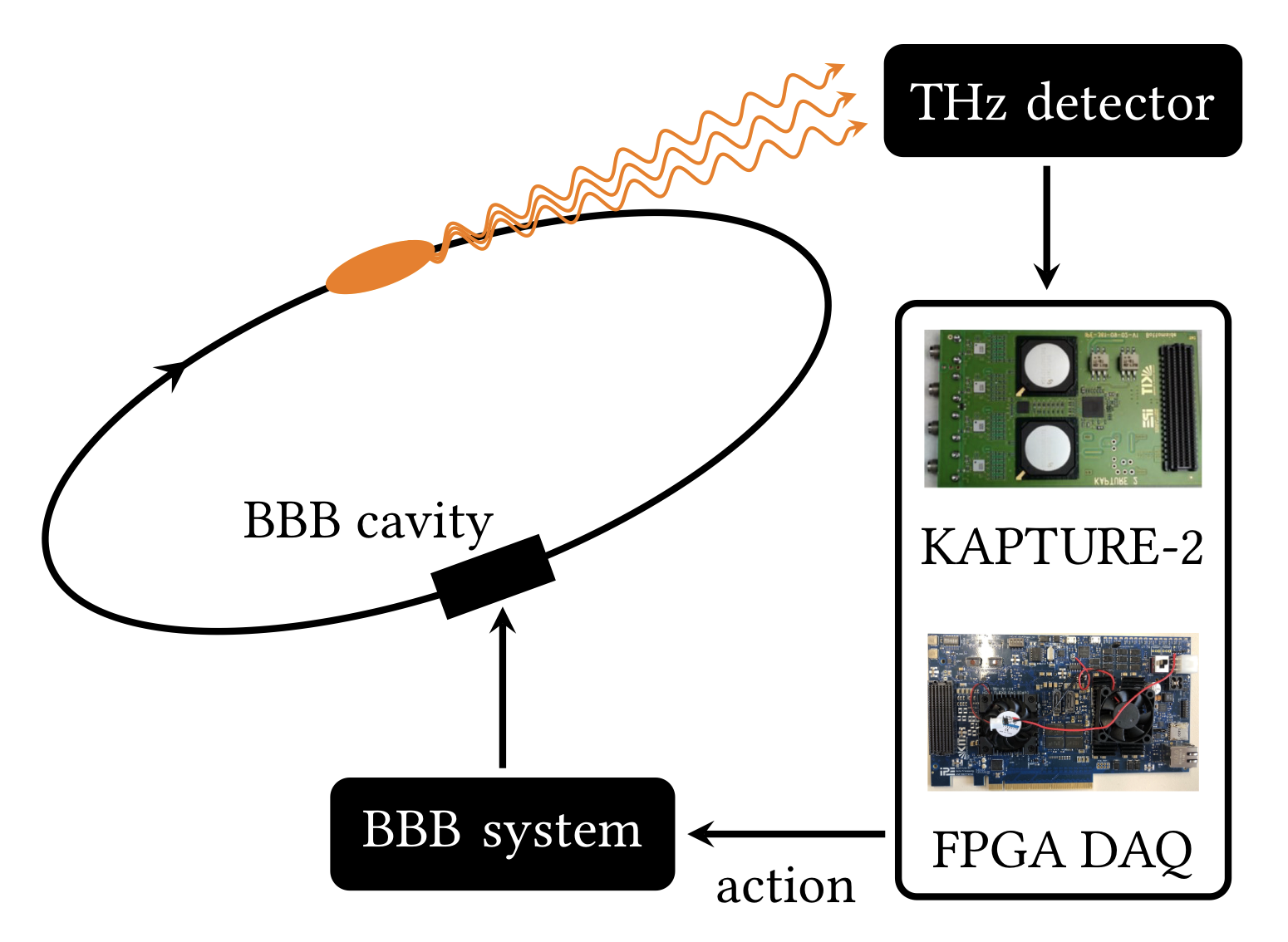T. Boltz
Karlsruhe Insitute of Technology KIT
PhD thesis
Abstract
At the time this thesis is written, the world finds itself amidst and partly in the process of recovering from the COVID-19 pandemic caused by the SARS-Cov-2 virus. One major contribution to the worldwide efforts of bringing this pandemic to an end are the vaccines developed by different research teams all around the globe. Produced in a remarkably short time frame, a crucial first step for the discovery of these vaccines was mapping out the atomic structure of the proteins making up the virus and their interactions. Due to the bright X-rays required in the process, synchrotron light sources play an active role in the ongoing efforts of accomplishing that goal. Synchrotron light sources are particle accelerators that are capable of providing intense electromagnetic radiation by accelerating packages of electrons, called bunches, and forcing them on curved trajectories. Besides the support of research on the SARS-Cov-2 virus, the remarkable properties of synchrotron radiation lead to a multitude of applications in a variety of scientific fields such as materials science, geology, biology and medicine. As a special form of synchrotron radiation, this thesis is concerned with the coherent synchrotron radiation (CSR) generated by short electron bunches in a storage ring. At wavelengths larger than the size of the emitting electron structure, the particles within a bunch radiate coherently. This coherent emission of synchrotron radiation scales with the number of involved particles and can thus enhance the intensity of the emitted radiation by several orders of magnitude. As a consequence, modern synchrotron light sources, such as the Karlsruhe Research Accelerator (KARA) at the Karlsruhe Institute of Technology (KIT), are deliberately operating with short bunch lengths to extend the radiated CSR spectrum to higher frequencies and to increase the intensity of the emitted radiation. Yet, the continuous reduction of the bunch length at high beam intensities eventually leads to complex longitudinal dynamics caused by the self-interaction of the electron bunches with their own emitted CSR. This phenomenon, generally referred to as micro-bunching or micro-wave instability, can lead to the formation of dynamically changing micro-structures within the charge distribution of the electron bunches and thus to a uctuating emission of CSR. Moreover, it can cause oscillations of the bunch length and the energy spread, which can be detrimental to the operation of a synchrotron light source. On the other hand, as electron structures smaller than the full electron bunch, the micro-structures created by the instability lead to an increased emission of CSR at frequencies up to the THz frequency range. The instability can thus also be beneficial for a variety of applications that rely on intense radiation in that particular frequency range.
Over the past years, the micro-bunching instability has been extensively studied at the KIT storage ring KARA and other synchrotron light sources. Facilitated by the development of novel diagnostics and simulation tools, the instability and the underlying longitudinal beam dynamics were observed and analyzed in great detail and across a large range of machine parameters. Building upon the gained insights and experience with the instability, the work summarized in this thesis takes these efforts one step further by approaching the topic of control over the occurring micro-bunching dynamics. In a careful analysis of the perturbation generated by the CSR self-interaction, an effective method of influencing the formation of micro-structures is identified and the resultant opportunities of exerting control over these dynamics are pursued. As indicated above, the benefits of extensive control over the micro-bunching instability are twofold. A practical method of mitigating the CSR-induced perturbation at an electron storage ring would extend the regime of stable operation to shorter bunch lengths and higher bunch currents. As illustrated in the context of the COVID-19 pandemic, particle accelerators in general and synchrotron light sources in particular are instruments that facilitate basic scientific research in various domains. An extension of the sustainable beam properties that can be provided to external experiments is thus a major benefit. Additionally, successful mitigation of the micro-bunching instability would expand the capabilities to optimize for related beam properties, at existing facilities, but also for future synchrotron light sources. On the other hand, a deliberate and controlled excitation of the micro-structures can amplify the intensity of the CSR emitted in the frequency range corresponding to the spatial extent of the structure and could thus be used to tailor the emission of CSR to dedicated experiments. In an attempt to support these complementary objectives, the presented work is mainly concerned with finding direct ways of interacting with the micro-structure formation process in order to influence the beam dynamics in either direction. For the objective of mitigating the micro-bunching dynamics, which turns out to be the more challenging task, the necessity for dynamic adjustments of the applied control signal naturally motivates the use of reinforcement learning (RL) methods. The general task is thus formalized as an RL problem and different state-of-the-art algorithms are applied to solve the underlying control problem. The pursued approach towards micro-bunching control at electron storage rings is developed and tested on the basis of simulation data and its feasibility verified in first experiments at KARA.
Read the paper: https://publikationen.bibliothek.kit.edu/1000140271
Contact: -
